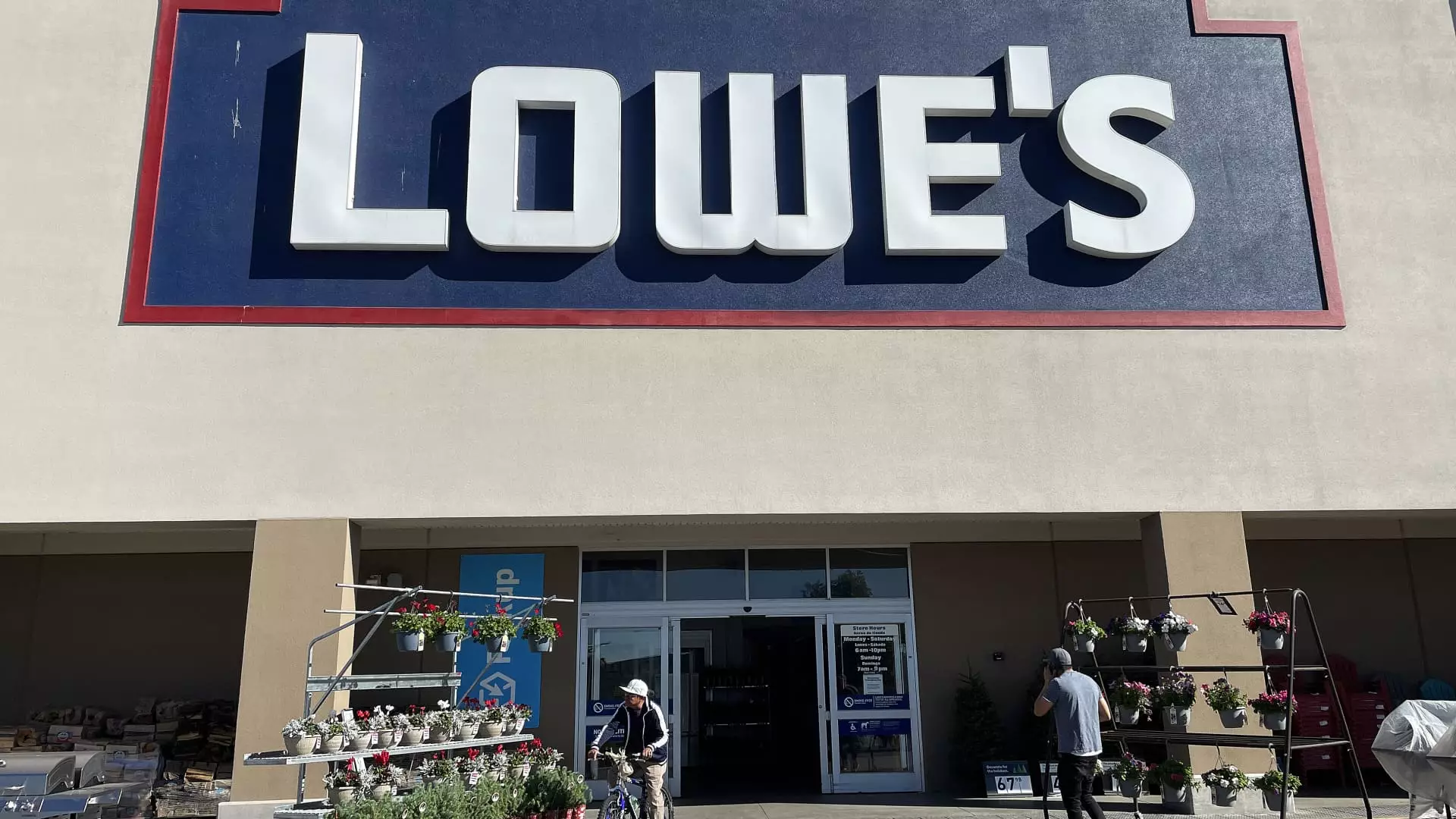Despite a decrease in sales, Lowe’s managed to surpass Wall Street’s expectations for quarterly earnings and revenue. This is a positive sign for the home improvement retailer, especially considering the challenges faced by its competitors in the same industry.
When comparing Lowe’s with Home Depot, it is evident that Lowe’s draws less of its business from professional contractors and painters. As a result, the company is more reliant on do-it-yourself customers, who have been buying fewer pricey items in recent months. This difference in customer base may have contributed to Lowe’s decline in sales.
Lowe’s has recognized the need to diversify its customer base and has been making efforts to attract more professional customers. CEO Marvin Ellison mentioned that gains with professionals and online sales growth have partially offset the decline in do-it-yourself spending. This strategic shift is aimed at creating a more stable revenue stream for the company.
While Lowe’s stuck by its full-year forecast and expects total sales to decline, it is important to note that the company is facing challenges in the current economic environment. The anticipation of a decrease in comparable sales and earnings per share indicates that Lowe’s is preparing for a tough year ahead.
Despite the decline in sales and the cautious outlook, Lowe’s stock has performed relatively well compared to the broader market. The company’s stock is up nearly 3% this year, although it lags behind the gains of the S&P 500. Investors will be closely monitoring Lowe’s performance in the coming months to see if the company can sustain its positive momentum.
Lowe’s ability to exceed earnings and revenue expectations is a positive development for the company. However, the decline in sales and the cautious outlook for the rest of the year pose significant challenges. By focusing on attracting more professional customers and growing online sales, Lowe’s is positioning itself for long-term success in a competitive retail environment.

